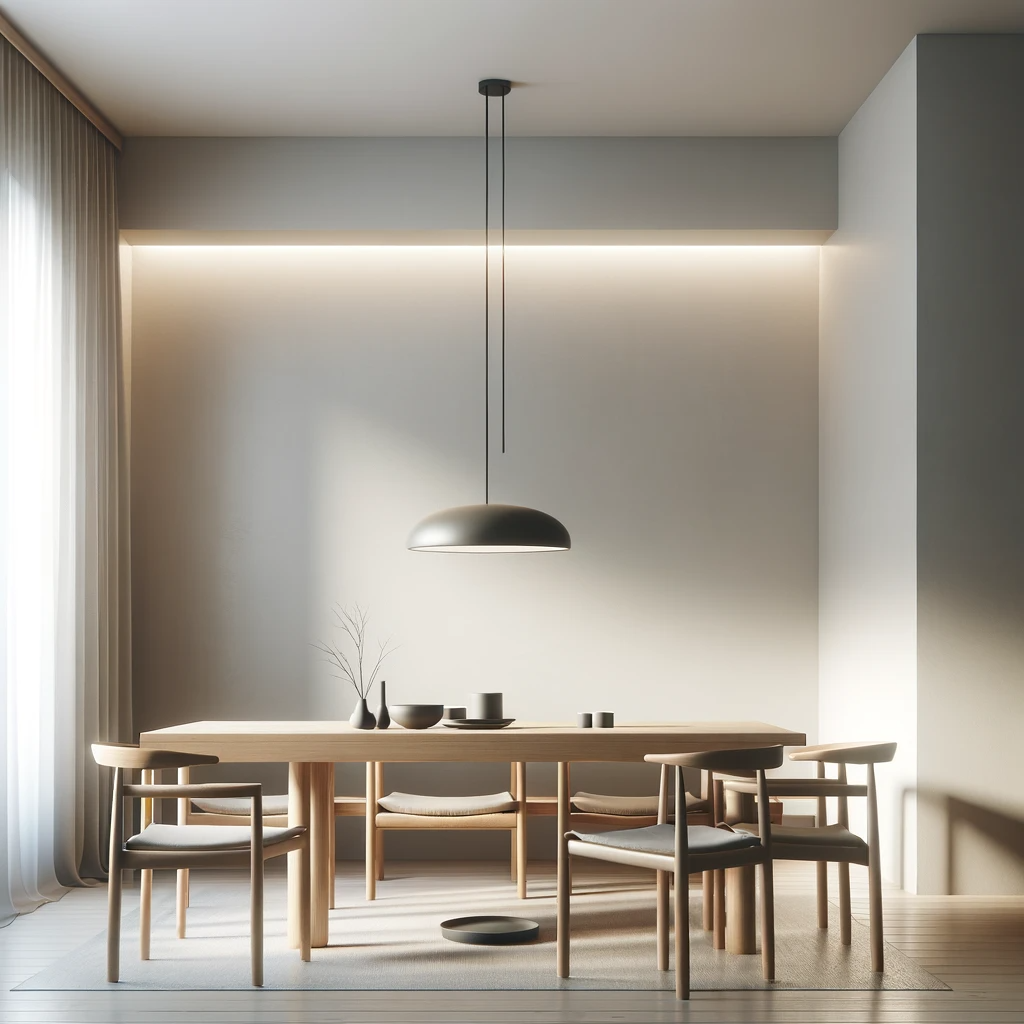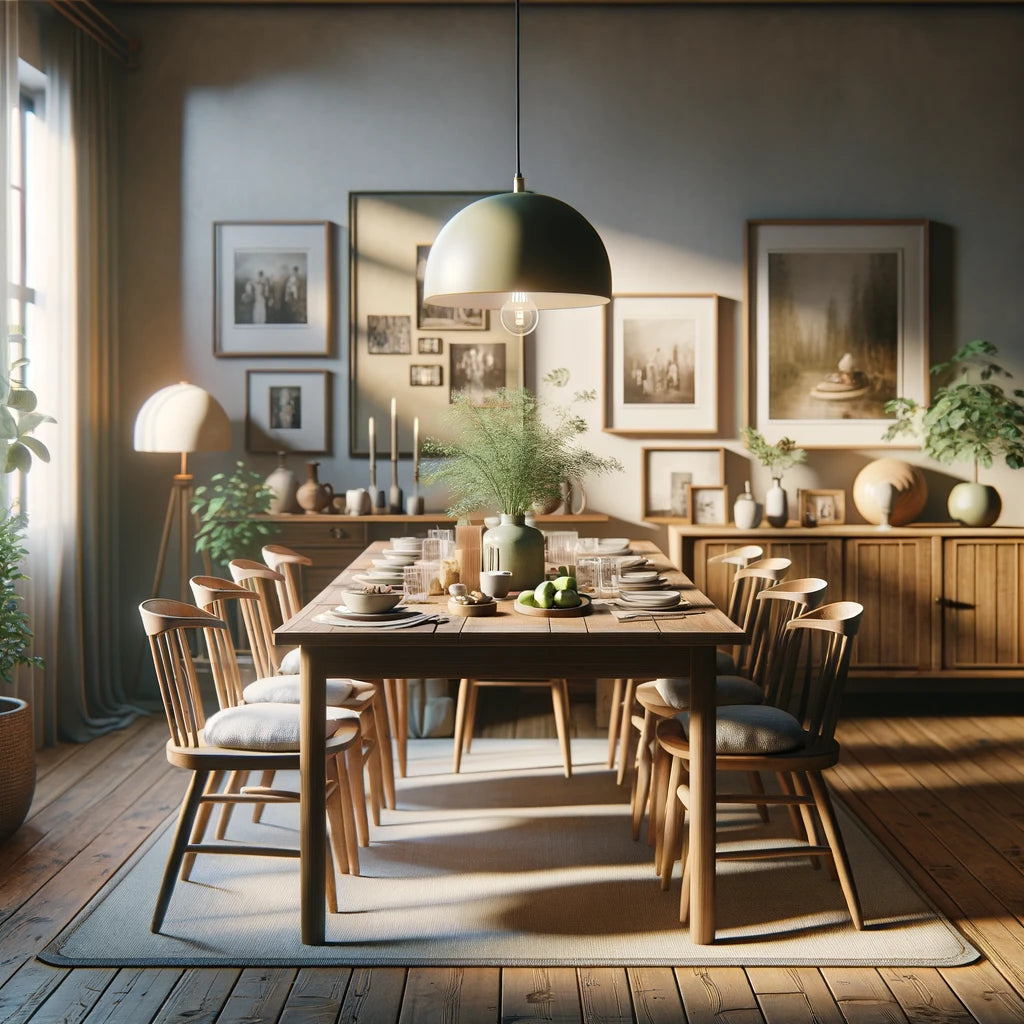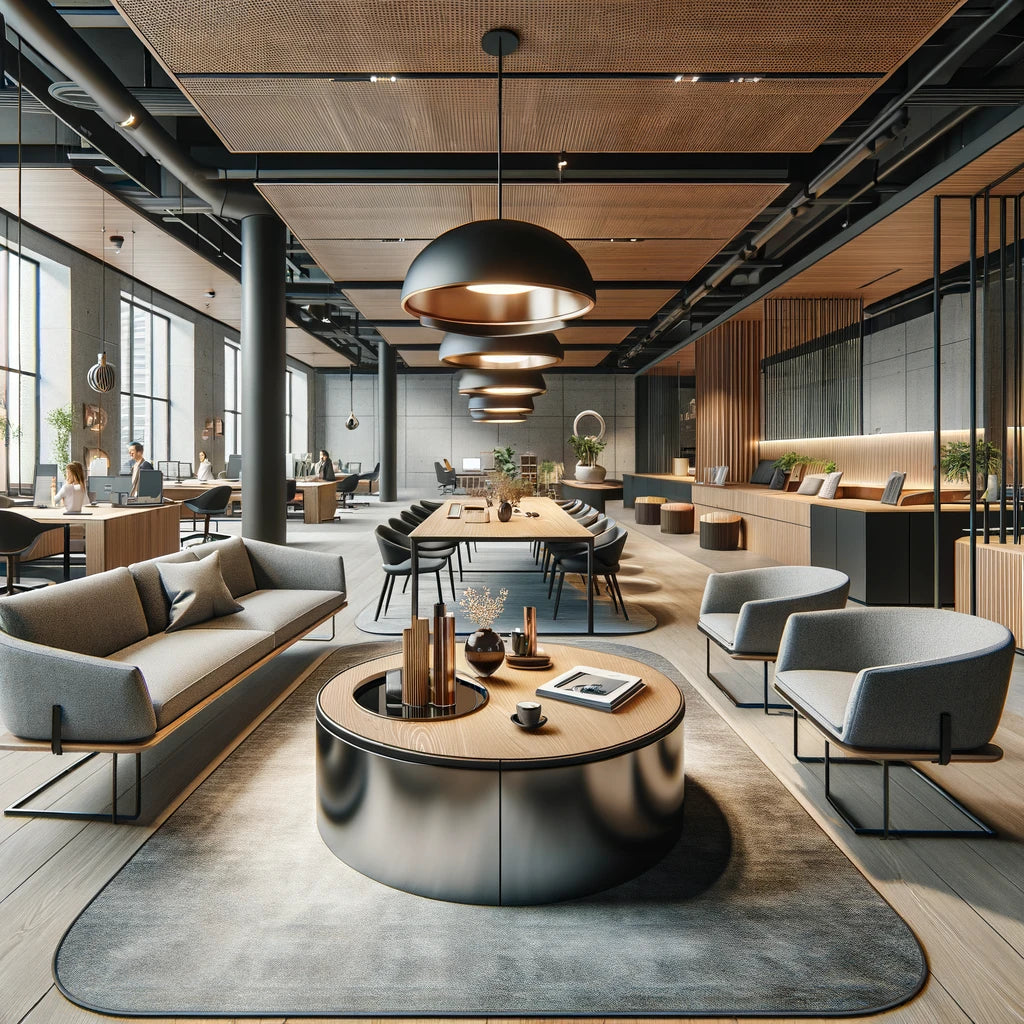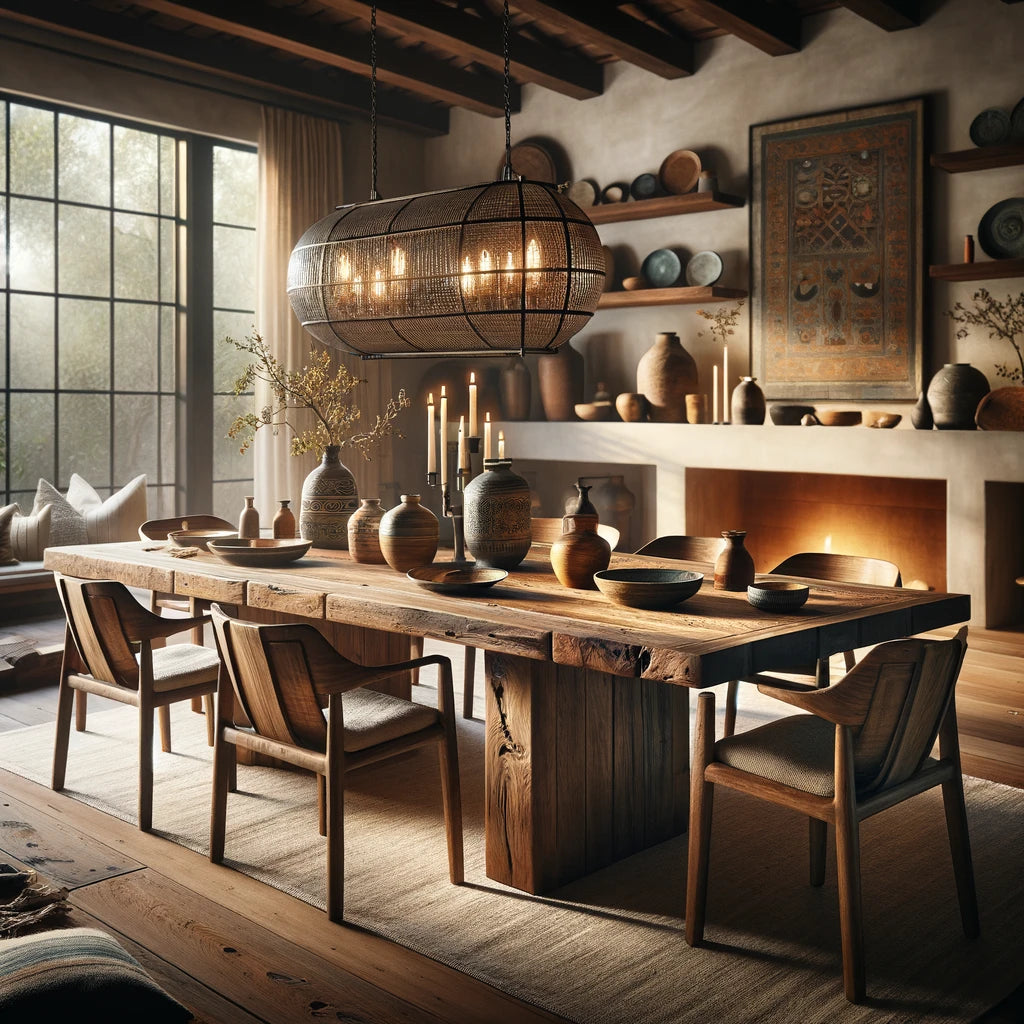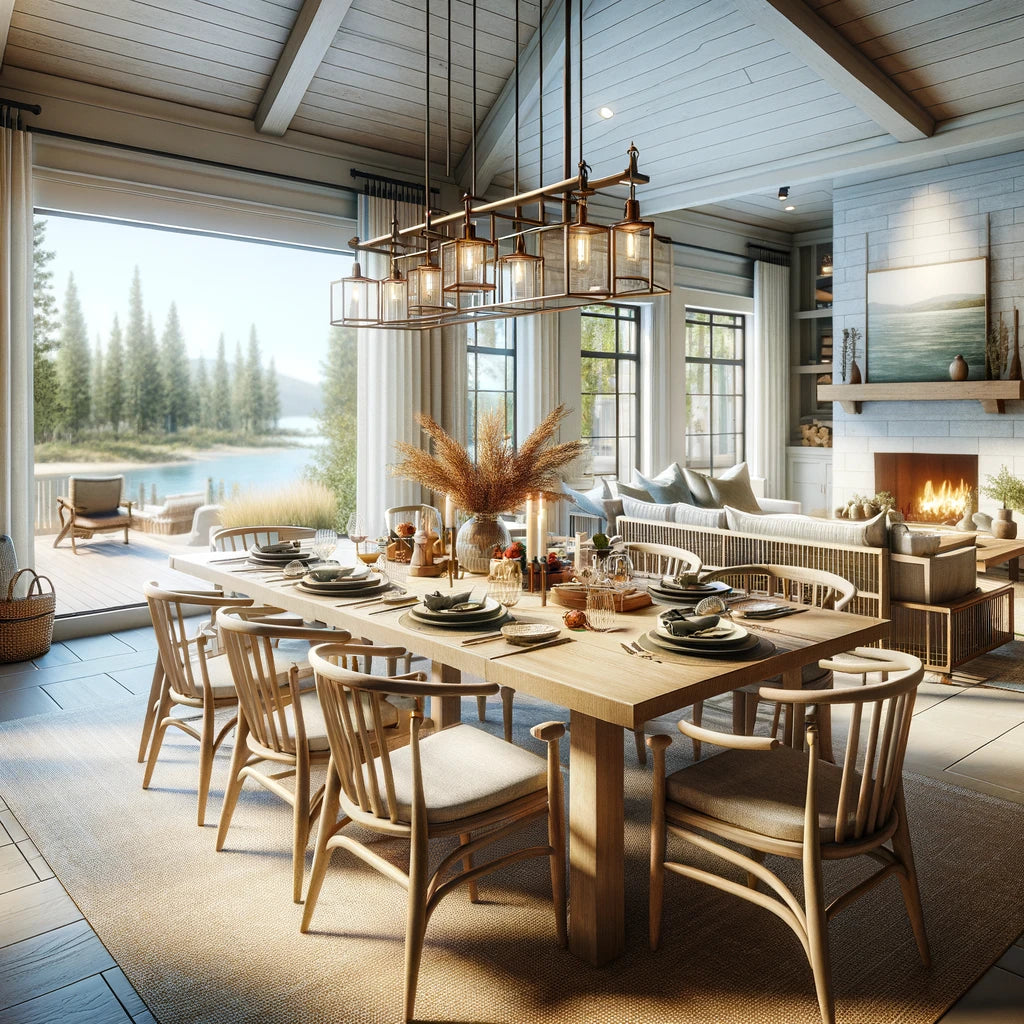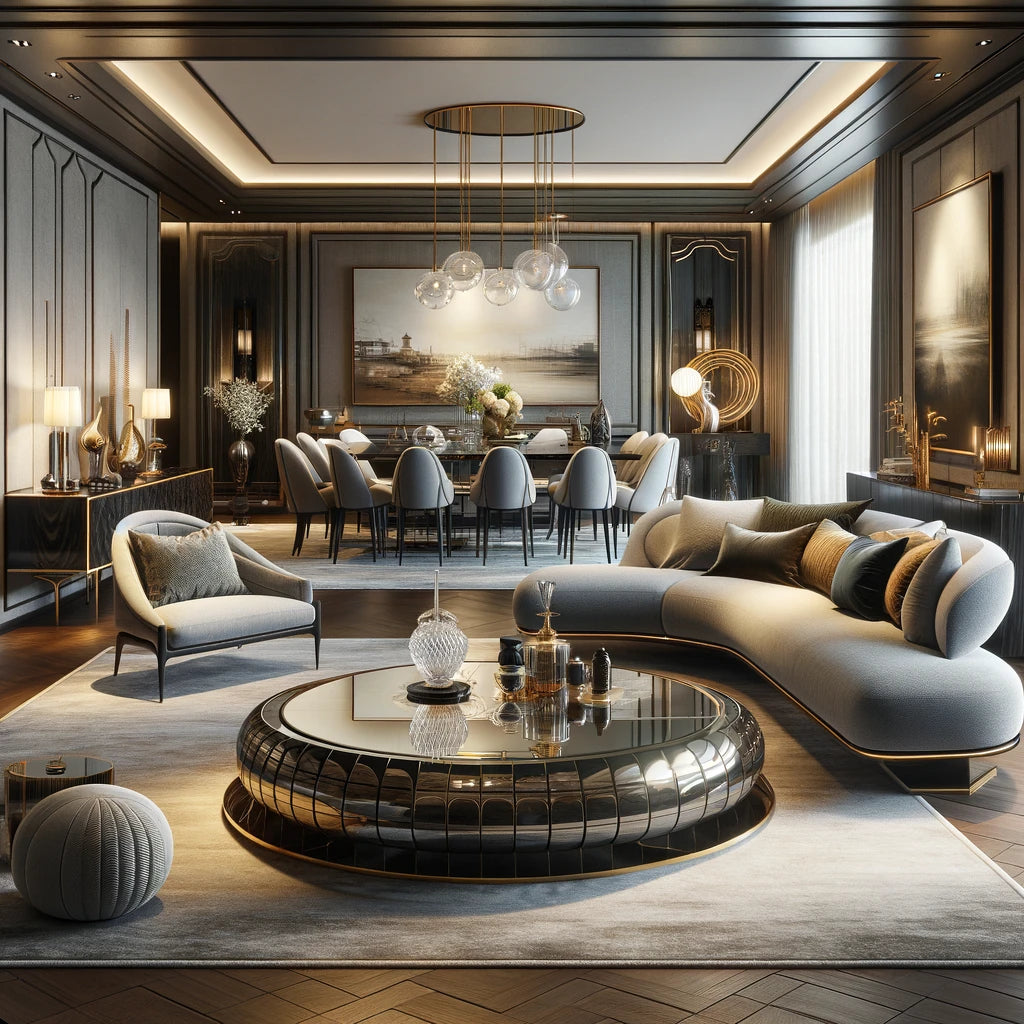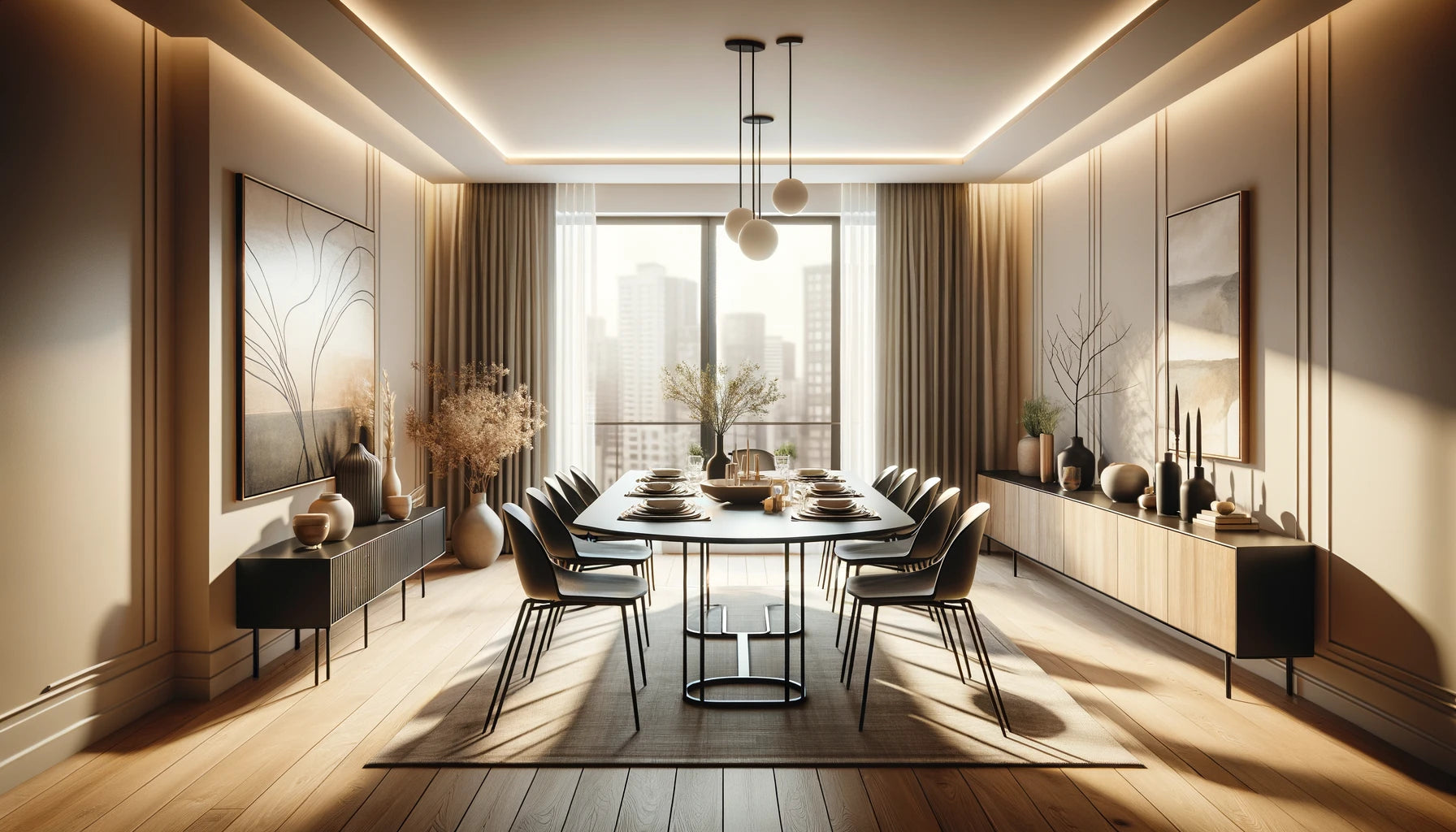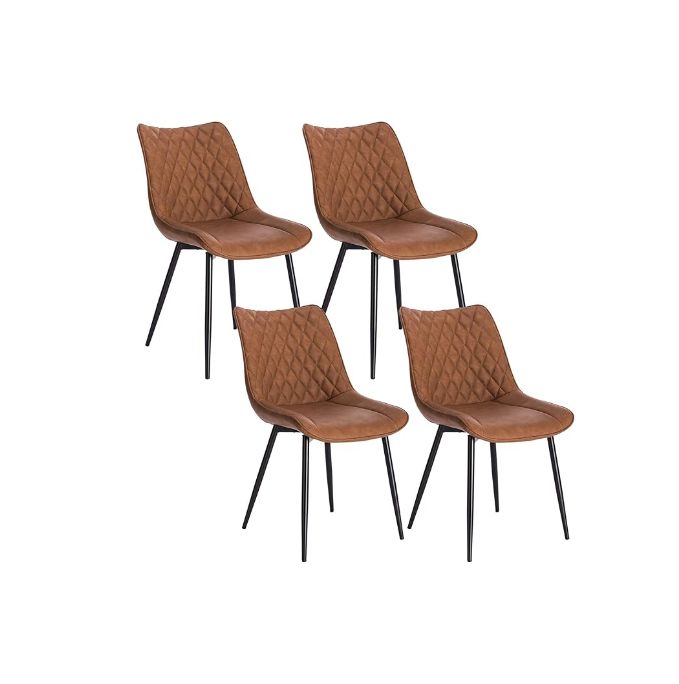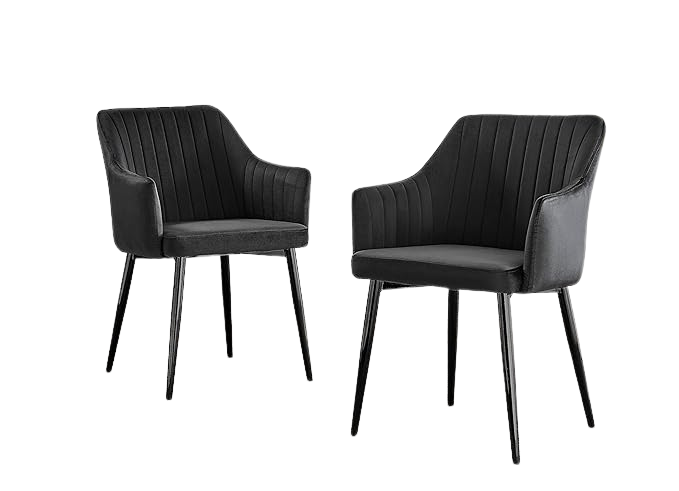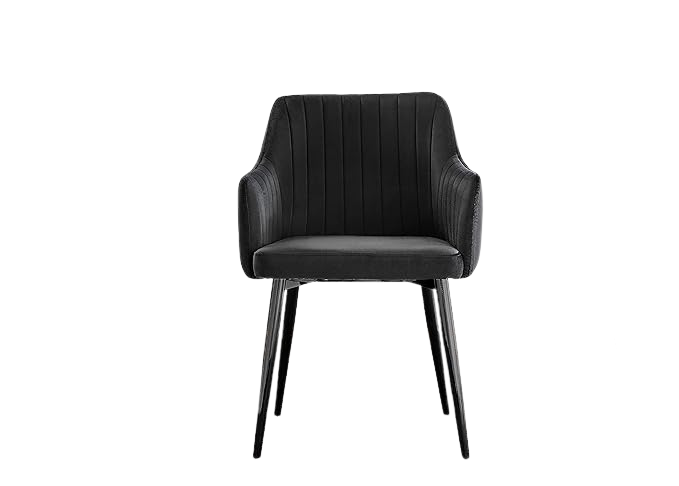In the world of interior design, few concepts are as captivating as minimalism, where less truly becomes more.
At its heart, minimalism is a celebration of simplicity, an artful dance of clean lines, uncluttered spaces, and the elegant interplay of light and form.
In this exploration of minimalist dining décor, we delve into the fundamental principles that guide this design philosophy, each element carefully chosen to create a harmonious and serene atmosphere. From the sleek dining tables that embody the essence of minimalism to the subtle use of colour, texture, and lighting, every facet of minimalist design contributes to an inviting and unembellished dining experience.
Embracing Simplicity
Embracing simplicity is at the core of minimalist interior design philosophy.
When it comes to creating a minimalist dining space, the key is to keep everything clean, uncluttered, and focused on essential elements. Start by selecting a dining table that embodies these principles – one with clean lines and a sleek profile. In our collection, you can find tables that exemplify these characteristics, allowing the table's inherent beauty, fine craftsmanship, and the quality of materials to shine through.

Minimalist dining spaces are all about creating a serene and unembellished environment that allows you to appreciate the beauty of simplicity. Avoid the temptation to over-decorate or clutter the space with unnecessary items. Instead, opt for a few carefully chosen pieces that make a powerful statement. This could include minimalist chairs, lighting fixtures, or tableware that complement the dining table's design.

By focusing on simplicity in your dining space, you create a serene atmosphere that promotes mindfulness and relaxation. It allows you to savour the dining experience without distractions, making meal times more enjoyable and meaningful. Additionally, a minimalist approach to décor can also make your dining area appear more spacious and open, enhancing the overall aesthetics of the room.
Quality over Quantity
Quality over quantity is a fundamental principle in minimalist interior design.
When creating a minimalist dining space, it's essential to carefully curate your furnishings and decor, ensuring that each item not only serves a purpose but also exudes craftsmanship and timeless design. By opting for fewer, high-quality pieces, you can elevate the overall look and feel of your dining area.

One way to apply this principle is by selecting a set of elegant, minimalist chairs that harmonise with your dining table. These chairs should not only be comfortable but also showcase exceptional craftsmanship and materials. Investing in such pieces ensures that your dining area maintains a clean and sophisticated appearance while providing long-lasting comfort and functionality.
Another way to emphasise quality over quantity is by incorporating a simple yet striking centrepiece. This centrepiece should capture attention without overwhelming the space. It could be a beautifully crafted vase with fresh flowers, a sculptural piece of art, or an exquisite decorative bowl. Such items not only enhance the visual appeal of your dining area but also demonstrate your commitment to timeless design and superior craftsmanship.

In a minimalist dining space, every item becomes a statement piece, and each piece contributes to the overall aesthetic. By prioritising quality over quantity, you create a refined and curated atmosphere that exudes elegance and sophistication. This approach ensures that your dining area remains a welcoming and visually pleasing environment where every element has earned its place through its intrinsic value and enduring design.
Neutral Palette
A neutral colour palette is a cornerstone of minimalist design, and it plays a significant role in creating the calm and uncluttered atmosphere that characterises minimalist spaces.

When designing your dining area, incorporating a neutral colour scheme can have a profound impact on the overall aesthetics and ambiance. Think of colours such as whites, beiges, and greys, which form the basis of this palette, and consider adding occasional hints of colour for depth and interest.
Neutral tones serve as a serene backdrop for your minimalist dining space, allowing the true beauty of your furniture and decor to take centre stage. In this context, dining tables with natural wood tones are particularly noteworthy. The warmth and richness of wood create a harmonious contrast against the muted backdrop of neutral colours. The grains and textures of the wood become even more pronounced, enhancing the visual appeal and tactile experience of your dining table.

When strategically placed, these hints of colour, whether through textiles, artwork, or subtle decorative elements, can add a layer of sophistication and interest to your dining area without disrupting its minimalist essence. These accents can draw attention to specific areas or objects, serving as focal points that accentuate the overall design.
Texture and Material Play
While minimalism often emphasises simplicity and clean lines, it doesn't necessitate the absence of texture or materials.
In fact, incorporating various textures and materials into your minimalist dining space can be a powerful way to add warmth, depth, and interest to the environment. By carefully choosing and juxtaposing different textures, you can create a tactile experience that enhances the overall aesthetic.
One effective approach is to contrast smooth and polished surfaces with rough-textured elements. For instance, you can place a sleek, polished dining table in your space and pair it with a rough-textured rug underneath. This contrast not only adds visual intrigue but also provides a delightful tactile experience when walking on or touching the rug.

Additionally, consider incorporating soft and tactile materials into your dining area. For example, linen napkins or placemats can create a pleasing contrast against the hard surface of the dining table. These soft elements not only introduce a sense of comfort but also enhance the sensory aspect of your dining experience.
By playing with texture and materials, you can elevate your minimalist dining space, making it more inviting and engaging. These tactile contrasts add layers of visual and sensory interest without compromising the clean and uncluttered aesthetic that minimalism is known for. In essence, it's about finding the right balance between simplicity and sensory richness to create a dining area that appeals to both the eyes and the touch.

Functional Elegance
In the realm of minimalist design, functionality reigns supreme.
Every element in a minimalist setting should not only contribute to the visual aesthetics but also serve a practical purpose. When it comes to your dining area, selecting tableware and accessories that combine beauty with functionality is a fundamental principle. By choosing items that are both elegant and practical, you can transform everyday dining into a sophisticated and enjoyable experience.
One of the key aspects of functional elegance is in the selection of tableware. Opt for simplistic, well-designed cutlery that not only complements the overall minimalist aesthetic but also feels comfortable in hand and serves its intended purpose effectively. Plain ceramic plates, often characterised by their clean lines and neutral tones, are an excellent choice for minimalist dining. These plates not only showcase simplicity but are also easy to clean and maintain, emphasising the practical aspect of minimalism.

Stemless glassware is another example of functional elegance in a minimalist dining setting. These glasses not only look modern and streamlined but also make it easy to serve and enjoy your favourite beverages without the risk of tipping over. Their versatile design can accommodate various drink types, from water and wine to cocktails, making them a practical and stylish addition to your table.

By prioritising functionality alongside aesthetics, you create a dining experience that seamlessly blends form and purpose. Your choice of tableware and accessories in a minimalist context not only elevates the visual appeal of your dining area but also ensures that every meal is a refined and practical affair. In essence, functional elegance embodies the essence of minimalism, where simplicity and utility coexist harmoniously to enhance the quality of your everyday life.
Lighting as a Design Element
Lighting is a pivotal design element in minimalist decor, and it can profoundly influence the ambiance and overall aesthetics of your dining space.
When employed thoughtfully, lighting has the power to transform the room and draw attention to key elements while maintaining the core principles of minimalism.
One approach is to incorporate a statement light fixture above your dining table. Choose a fixture with a clean and simple design that aligns with the minimalist theme. Such a light fixture can serve as a focal point in your dining area, adding a touch of elegance and visual interest without overwhelming the space. It becomes a source of illumination and artistry, enhancing the dining experience.

Another lighting strategy to consider is the use of dimmable lights. Dimmers allow you to adjust the brightness according to your mood and the occasion. By creating a softer and more intimate atmosphere with dimmed lighting, you can highlight the simplicity of your table setting and emphasise the beauty of the minimalist design. This versatile lighting solution not only adds versatility to your dining space but also complements the overall minimalist ethos by allowing you to achieve the desired level of illumination while preserving the clean and uncluttered look.

Personal Touch
Minimalism in interior design is often associated with clean lines, simple colour palettes, and a sense of spaciousness.
However, this doesn't mean that your living spaces have to lack personality or warmth. In fact, it's essential to strike a balance between minimalism and personalization to create a space that truly feels like home. One effective way to achieve this balance is by incorporating a personal touch into your décor.

The key to adding a personal touch while maintaining a minimalist aesthetic is to focus on a single, meaningful piece. This piece should hold sentimental value or resonate with your personal style. It could be a vase filled with fresh flowers from your garden, a family heirloom passed down through generations, or a carefully chosen piece of art that speaks to your soul. By selecting one item that has a special significance to you, you not only infuse your space with personality but also avoid clutter and maintain the overall clean look of minimalism.
The personal touch you introduce into your dining space can serve as a conversation starter and a source of comfort for you and your guests. Whether it's a piece of artwork that tells a story or a cherished item that represents your heritage, it adds depth and dimension to the room. It becomes a focal point that draws attention and invites curiosity, making your dining area a unique and inviting place for shared moments.
Harmony and Balance
In the realm of minimalist design, achieving harmony and balance is the ultimate objective.
These principles are the keys to creating a dining table decor that embodies the essence of minimalism while providing a serene and inviting atmosphere. Several strategies can help you attain this sense of equilibrium in your dining area.
One way to establish balance is by arranging furniture and accessories symmetrically. This means placing items in a way that mirrors one side of the table or room with the other, creating a sense of visual equilibrium. For instance, if you have a centrepiece on the table, consider placing it at the centre to maintain symmetry. Symmetrical arrangements bring a sense of order and calm to the dining space, in line with the minimalist philosophy.

Balanced colour schemes are also essential in achieving a harmonious dining table decor. Stick to a limited palette of neutral colours, as mentioned earlier, to maintain a consistent and balanced look. These colours create a cohesive backdrop that complements the minimalist style while promoting a sense of tranquillity.
Even spacing of accessories and table settings is another crucial aspect of balance. Ensure that items are evenly distributed along the table, avoiding clutter or overcrowding. This not only enhances the clean and uncluttered appearance but also fosters a feeling of openness and serenity.
Concluding Remarks
In our quest to understand and appreciate minimalist dining decor, we have uncovered the profound beauty in simplicity.
We have witnessed how clean lines and uncluttered spaces can create a serene backdrop for meaningful moments. We have explored the transformative power of quality over quantity, where each piece of furniture and decor serves a purpose and speaks of timeless design. We have marvelled at the subtle yet impactful influence of neutral palettes, textures, materials, and the role of lighting as an art form. And finally, we have embraced the importance of balance and harmony, where the careful arrangement of elements brings peace and tranquillity to our dining spaces.
As we conclude this exploration, we leave you with the wisdom that minimalism is not merely a design choice; it's a way of life that encourages mindfulness, intentionality, and an appreciation for the beauty of simplicity. Whether you're seeking to transform your dining area into a minimalist haven or simply looking to incorporate some of these principles into your home, remember that minimalism is an art that can be tailored to your unique style and preferences. It is a journey of self-expression, where you curate your surroundings to reflect your values and create a sanctuary of serenity and sophistication.

